 |
 |
 |
| |
Once-a-Month CAB/RPV Effective in Women--Fewer Adverse Events Than Men
|
| |
| |
17th European AIDS Conference, November 6-9, 2019, Basel
Mark Mascolini
Combined analysis of two 48-week randomized trials confirmed that long-acting injectable cabotegravir/rilpivirine (CAB/RPV) is virologically noninferior to an oral three-drug regimen in women [1]. The analysis also revealed lower adverse event rates in women than men by several measures.
ATLAS and FLAIR are international phase 3 open-label trials that randomized adults to once-monthly intramuscular injections of CAB/RPV (after an oral lead-in) or to a continued oral 3-drug combination. Researchers from CAB and RPV developers and colleagues at other centers conducted this combined analysis of CAB/RPV efficacy and safety in women enrolled in these trials.
ATLAS randomized 616 antiretroviral-experienced people (203 women) to stay with a suppressive standard oral regimen or switch to oral CAB plus oral RPV for 4 weeks then (if maintaining virologic suppression) to once-monthly injected CAB/RPV. FLAIR enrolled previously untreated people who took oral dolutegravir/abacavir/lamivudine (DTG/ABC/3TC) for 20 weeks. At that point 566 people with viral suppression (127 women) continued the DTG regimen or switched to oral CAB plus oral RPV for 4 weeks, then to once-monthly injected CAB/RPV.
In the combined trial groups, 162 women (27%) and 429 men (73%) got randomized to CAB/RPV, and 168 women (28%) and 423 men (72%) got randomized to the control arms. Across those four groups, age averaged 41, 38, 43, and 38, proportions with a body mass index indicating obesity were 27%, 13%, 29%, and 13%, and proportions of blacks were 36%, 12%, 41%, and 15%.
At week 48 proportions with a viral load below 50 copies were 92.6% among women taking CAB/RPV, 93.2% among men taking CAB/RPV, 94.6% among women taking oral triple therapy, and 94.3% among men taking oral triple therapy. Virologic nonresponse (viral load at or above 50 copies at 48 weeks) occurred in 3.1% of women and 1.4% of men taking CAB/RPV and in 0.6% of women and 2.1% of men taking the oral combination. Seven people (5 women) taking CAB/RPV had confirmed virologic failure, as did 7 people (2 women) taking the standard oral regimen. Low concentrations of CAB or RPV did not explain confirmed virologic failure in women.
Among participants taking CAB/RPV, adverse event rates tended to be lower in women than in men: any adverse event (91% versus 96%), grade 3-5 adverse event (6% versus 13%), drug-related adverse event (78% versus 85%), and severe adverse event (3.7% versus 5.8%). Four women (2.0%) and 18 men (4.2%) had adverse events leading to discontinuation in the CAB/RPV arms, as did 4 women (2.4%) and 5 men (1.2%) taking oral triple therapy. No women in either treatment group had a drug-related serious adverse event; 1 man taking CAB/RPV and 1 taking an oral regimen had a drug-related serious adverse event.
Most participants taking CAB/RPV--81% of women and 86% of men--had injection-site reactions. These reactions lasted for a median of 3 days in both women and men. Two women (1%) and 4 men (less than 1%) had injection-site reactions leading to withdrawal from the trial. At week 44 a treatment-satisfaction score consisting of 12 items proved significantly higher with CAB/RPV than with oral therapy in both women (difference 4.3, P < 0.001) and men (difference 3.1, P < 0.001). Week-48 trial retention rates exceeded 90% in women randomized to either CAB/RPV or to standard oral therapy.
Reference
1. Quercia R, Orkin C, D'Amico R, et al. Outcomes for women in phase 3 trials of long-acting cabotegravir + rilpivirine: pooled ATLAS and FLAIR week 48 results. 17th European AIDS Conference, November 6-9, 2019, Basel. Abstract PS1/1.
----------------------

17th EACS 2019 Nov 6-9 Basel
Reported by Jules Levin
Romina Quercia,1 Chloe Orkin,2 Ronald D'Amico,3 Joseph M. Mrus,3 Sterling Wu,4 Amy Cutrell,3 Ken Chow,5 Joseph W. Polli,3 David A. Margolis,3 Peter Williams,6 Annemiek de Ruiter,1 Kimberly Smith,3 William R. Spreen3
1ViiV Healthcare, Research Triangle Park, Brentford, UK; 2Queen Mary University, London, UK; 3ViiV Healthcare, Research Triangle Park, NC, USA; 4GlaxoSmithKline, Collegeville, PA, USA; 5GlaxoSmithKline, Mississauga, Ontario, Canada; 6Janssen Research & Development, Beerse, Belgium
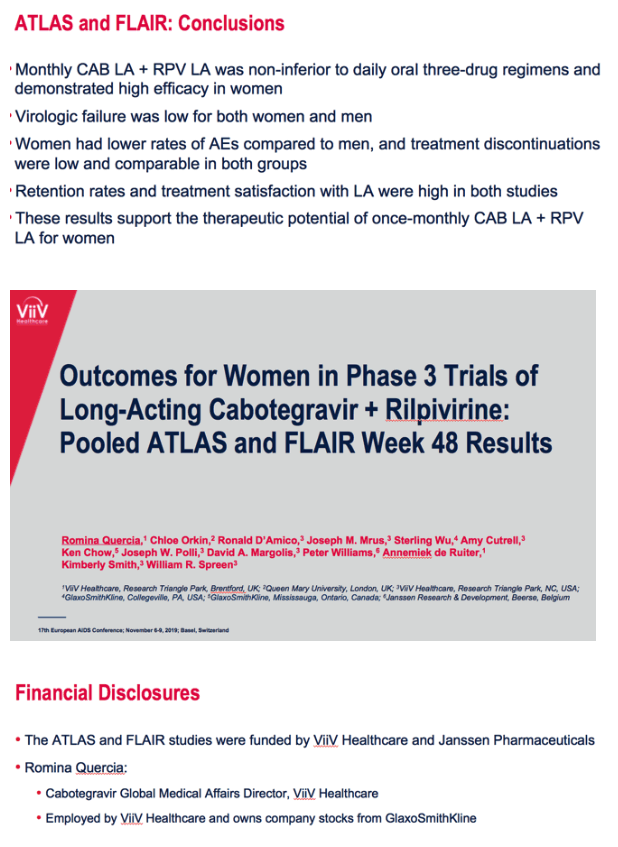
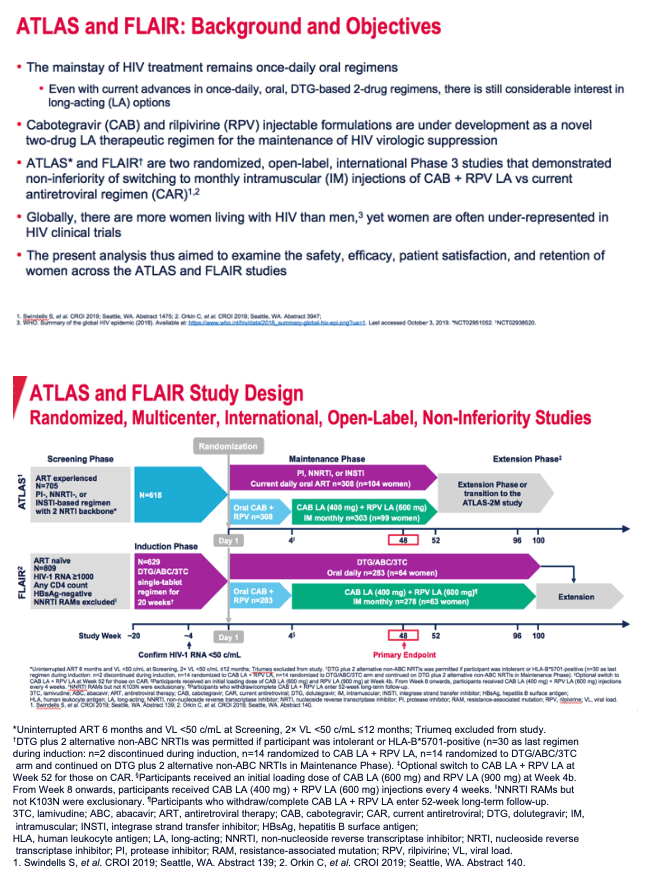
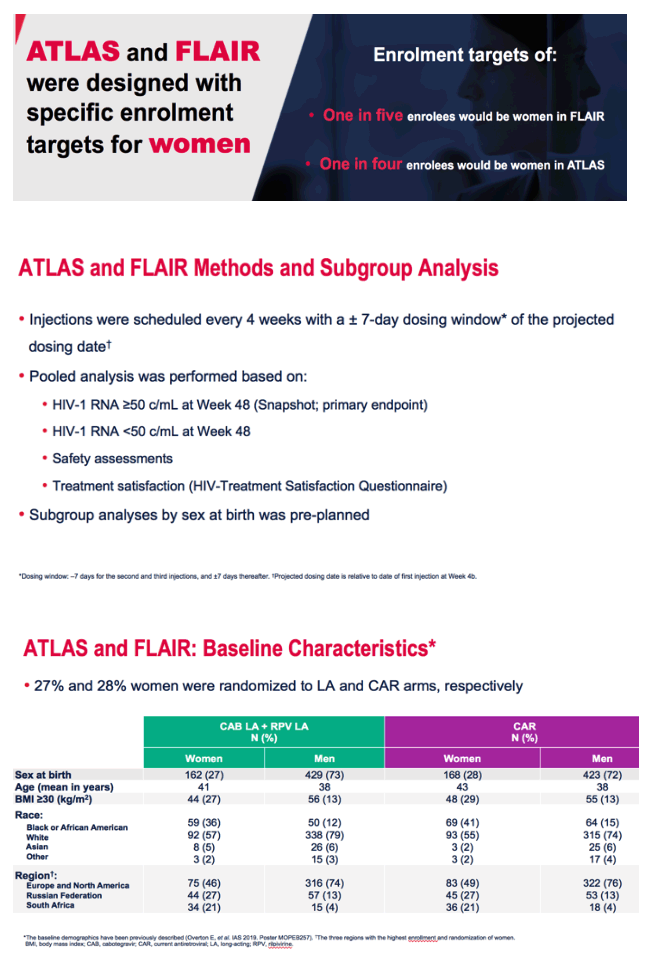
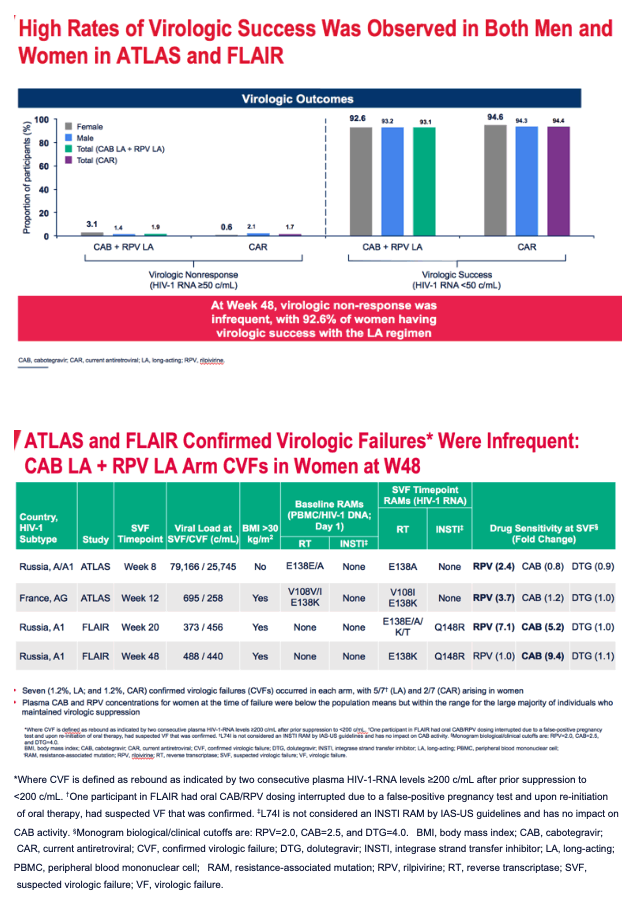
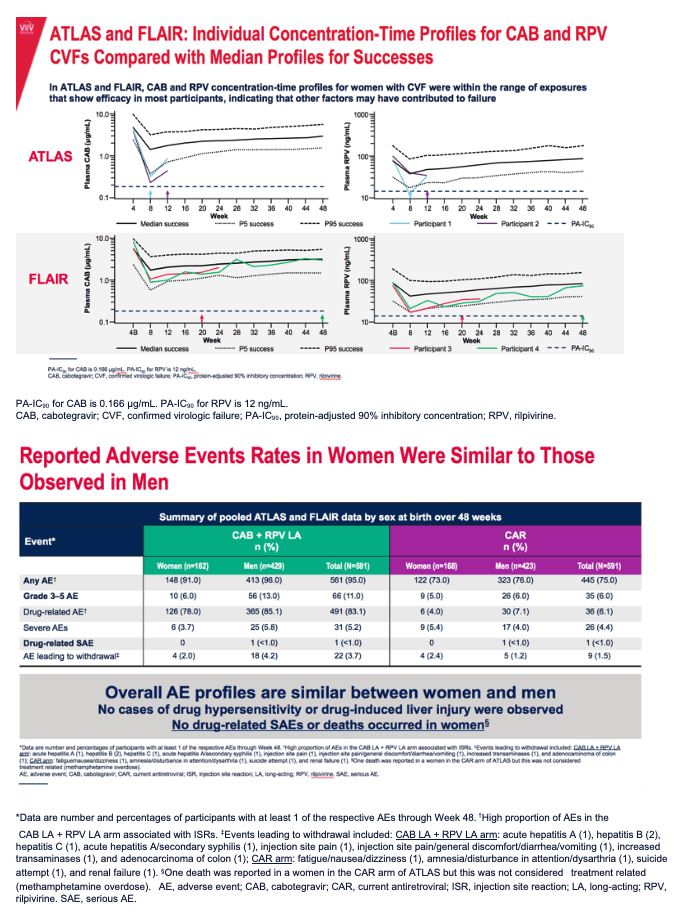
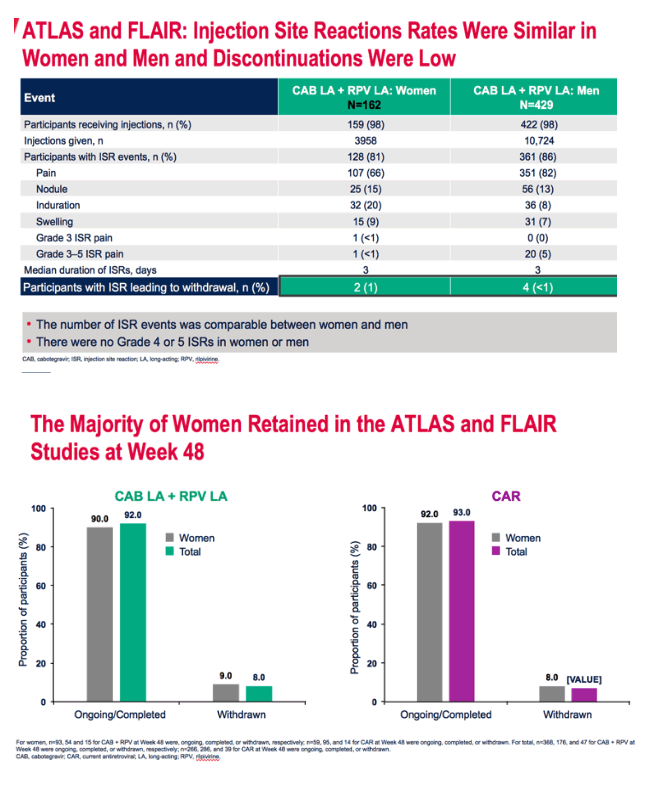
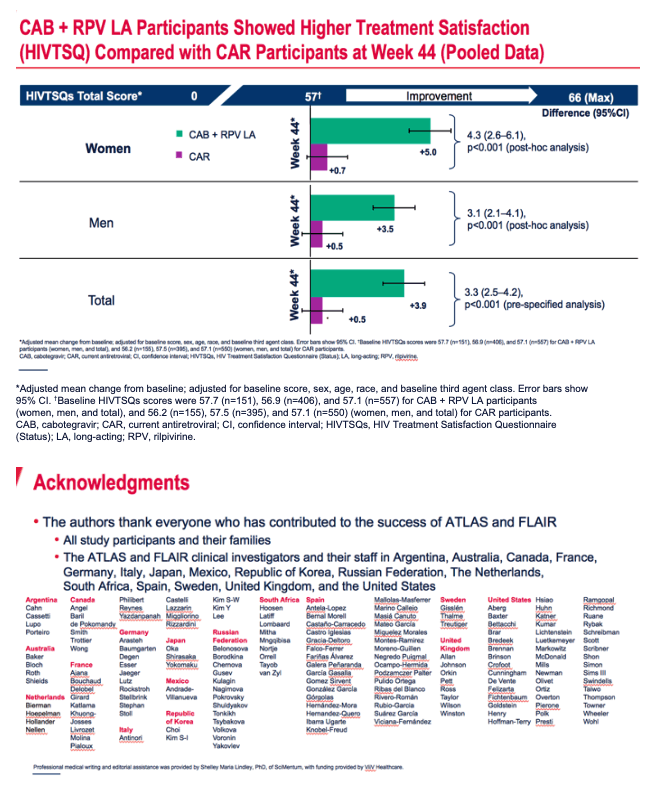
|
| |
|
 |
 |
|
|